
PL-400: Microsoft Power Platform Developer
PDFs and exam guides are not so efficient, right? Prepare for your Microsoft examination with our training course. The PL-400 course contains a complete batch of videos that will provide you with profound and thorough knowledge related to Microsoft certification exam. Pass the Microsoft PL-400 test with flying colors.

Curriculum for PL-400 Certification Video Course
| Name of Video | Time |
|---|---|
 1. Introduction |
1:24 |
| Name of Video | Time |
|---|---|
 1. Creating a Power Platform environment and a model-driven app |
3:04 |
 2. Installing Visual Studio Code |
2:45 |
 3. 44. What are the Event Handlers that I can use? |
5:10 |
 4. Writing our first JavaScript code, and registering an event handler |
9:43 |
 5. Setting and getting the value of fields |
6:58 |
 6. The executionContext.getFormContext() object |
6:58 |
 7. Adding Field Notifications |
5:18 |
 8. Debugging errors |
9:51 |
 9. Practice Activity Number 1 - The Solution |
9:28 |
| Name of Video | Time |
|---|---|
 1. Create a command function - modern interface |
7:31 |
 2. Creating a JavaScript action for a command function |
7:31 |
 3. Expanding the Alert Dialog box |
7:30 |
 4. Creating a Power Fx Action for a command button |
5:15 |
 5. The Visible property, and the Patch and Confirm functions |
5:35 |
 6. Expanding the Confirm box, and other actions |
4:54 |
 7. The Classic Control interface - rules and actions |
3:58 |
 8. Managing dependencies between JavaScript libraries |
5:45 |
| Name of Video | Time |
|---|---|
 1. What is PCF, and installing PAC |
4:44 |
 2. Creating a PCF Project |
7:14 |
 3. Configuring a code component manifest |
8:35 |
 4. Configuring the Manifest Properties |
7:36 |
 5. Implementing a textbox interface, and the code component lifecycle |
8:19 |
 6. Expanding our textbox interface |
8:47 |
 7. Adding a label interface |
10:58 |
 8. Adding a button |
7:13 |
 9. Downloading Visual Studio 2022 |
5:48 |
 10. Packing and deploying the component |
8:16 |
 11. Consuming the component |
6:50 |
 12. Updating our code |
6:45 |
 13. Redeploying our component |
4:15 |
| Name of Video | Time |
|---|---|
 1. Additional sample resources |
8:33 |
 2. Using Device features |
7:36 |
 3. Using WebAPI features |
6:02 |
 4. Other Xrm features |
8:10 |
| Name of Video | Time |
|---|---|
 1. Creating the plug-in outline |
8:51 |
 2. Adding code to our plug-in |
7:45 |
 3. Register custom assemblies by using the Plug-in Registration Tool |
6:23 |
 4. Describe the plug-in execution pipeline, and adding a step and testing |
8:23 |
 5. Adding tracing to our plug-in |
10:59 |
 6. Adding Profiling to our plug-in step |
6:16 |
 7. Adding additional error catching |
3:58 |
| Name of Video | Time |
|---|---|
 1. Implement business logic by using pre-images and post-images - Part 1 |
5:41 |
 2. Implement business logic by using pre-images and post-images - Part 2 |
6:55 |
 3. Introduction to the Organization service API, and creating a new table |
7:53 |
 4. Using the Organization service API - Create |
9:32 |
 5. Using the Organization service API - CreateRequest and CreateResponse |
4:02 |
 6. Using the Organization service API - Update and Delete |
5:42 |
 7. Using the Organization service API - Retrieve, and alternative keys |
10:28 |
 8. More about alternative keys, and possible problems |
8:42 |
 9. Using the Organization service API - RetrieveMultiple |
10:39 |
 10. Use the UpsertRequest message to synchronize data |
10:39 |
| Name of Video | Time |
|---|---|
 1. Optimize plug-in performance by configuring concurrency |
6:06 |
 2. Optimize plug-in performance by configuring transactions |
5:05 |
 3. Optimize plug-in performance by configuring batching |
4:37 |
 4. Table Change Tracking |
4:59 |
 5. Configure a Dataverse custom API message |
7:16 |
 6. Develop a plug-in that targets a custom action message |
6:11 |
 7. Writing code to trigger a custom message |
9:11 |
| Name of Video | Time |
|---|---|
 1. Configure event-driven function triggers in Azure Functions |
9:22 |
 2. Configure other triggers, including scheduled triggers, in Azure Functions |
6:57 |
 3. Create an event-driven function in Visual Studio |
9:34 |
 4. How you can process long-running operations using Azure Durable Functions |
7:34 |
 5. Creating an Azure Duration function |
7:26 |
| Name of Video | Time |
|---|---|
 1. Create a definition for the API |
7:01 |
 2. Create a custom connector for an Azure service |
6:44 |
 3. Extend an Open API definition for a custom connector |
6:16 |
 4. Use policy templates to modify connector behavior at runtime |
9:18 |
 5. Import definitions from existing APIs including Open API, Azure and GitHub |
6:35 |
 6. Perform authentication by using OAuth and configure API security |
7:36 |
| Name of Video | Time |
|---|---|
 1. What is Graph API? |
3:18 |
 2. Implement API limit retry policies |
5:25 |
 3. Register Azure Service Bus endpoint |
8:18 |
 4. Register webhook service endpoint |
5:07 |
 5. Register Azure Event Hub endpoint |
5:20 |
 6. Implement a Dataverse listener for an Azure solution |
3:27 |
 7. Implement an Azure listener in Power Automate |
3:54 |
| Name of Video | Time |
|---|---|
 1. Design and validate the technical architecture for a solution |
4:04 |
 2. Design authentication and authorization strategy |
2:39 |
 3. Determine whether you can meet requirements with out-of-the-box functionality |
2:49 |
 4. Determine when to use Logic Apps versus Power Automate cloud flows |
2:36 |
 5. Determine when to use serverless computing, plug-ins, or Power Automate |
2:48 |
 6. Determine when to build standard tables, virtual tables, or use connectors |
6:03 |
 7. Server-side/client-side Code vs Power Automate |
1:59 |
 8. Describe Dataverse custom APIs and their uses |
2:27 |
| Name of Video | Time |
|---|---|
 1. Troubleshoot operational security issues found in testing |
3:57 |
 2. Implement source control for projects including solutions and code assets |
6:21 |
 3. Describe application lifecycle management concepts |
2:27 |
 4. Manage solution layers |
4:10 |
| Name of Video | Time |
|---|---|
 1. Creating a test in Test Studio |
9:30 |
 2. Running and updating a test in Test Studio |
6:22 |
 3. Optimize app performance |
8:06 |
 4. Optimize model-driven app performance including forms and views |
6:15 |
 5. Identify and resolve connector and API issues |
4:56 |
 6. Troubleshoot app issues by using Monitor and other browser-based debug tools |
9:49 |
| Name of Video | Time |
|---|---|
 1. Power Automate - Implement error handling and retry policies |
6:38 |
 2. Error status codes |
5:04 |
 3. Configure trigger filters |
8:30 |
 4. Configure trigger filter operators and functions |
5:04 |
 5. Implement Azure Key Vault, and manage sensitive input/output parameters |
10:17 |
 6. Implement Azure Active Director service principals |
10:25 |
| Name of Video | Time |
|---|---|
 1. What's next? |
2:35 |
| Name of Video | Time |
|---|---|
 1. Describe how to use Package Deployer and associated tools creating a package |
11:31 |
 2. Deploying a Package Deployer |
3:42 |
 3. Create, manage, and interact with business process flows by using code |
7:43 |
 4. Events and methods which can be used with Business Process Flows |
7:37 |
Microsoft Power Platform PL-400 Exam Dumps, Practice Test Questions
100% Latest & Updated Microsoft Power Platform PL-400 Practice Test Questions, Exam Dumps & Verified Answers!
30 Days Free Updates, Instant Download!
PL-400 Premium Bundle

- Premium File: 418 Questions & Answers. Last update: Dec 6, 2025
- Training Course: 106 Video Lectures
- Latest Questions
- 100% Accurate Answers
- Fast Exam Updates
Microsoft PL-400 Training Course
Want verified and proven knowledge for Microsoft Power Platform Developer? Believe it's easy when you have ExamSnap's Microsoft Power Platform Developer certification video training course by your side which along with our Microsoft PL-400 Exam Dumps & Practice Test questions provide a complete solution to pass your exam Read More.
Unlock Low-Code Development with Microsoft PL-400 Certification Training
Enhance and extend Microsoft Power Platform capabilities with custom code for professionals who have already completed training.
Course Overview
The Microsoft PL-400 certification is designed for professionals seeking to become proficient developers within the Power Platform ecosystem. The course focuses on creating, implementing, and managing solutions using the low-code tools provided by Microsoft, including Power Apps, Power Automate, Dataverse, and Power BI. By completing this training, learners will gain the skills necessary to build enterprise-grade applications, automate complex workflows, and effectively analyze data to drive business decisions. The course emphasizes hands-on experience, enabling learners to apply concepts immediately to real-world projects.
With a strong focus on practical application, the PL-400 course also prepares students for the certification exam, ensuring that participants not only learn the technical skills but also understand the strategic role of Power Platform in modern business environments. The curriculum is structured to cover both foundational knowledge and advanced capabilities, making it suitable for professionals at different stages of their development career.
Throughout the course, learners will engage in projects that simulate real-world scenarios, including app development, workflow automation, data management, and reporting. These exercises ensure that participants understand the integration between Power Apps, Power Automate, Dataverse, and Power BI, and can leverage these tools to deliver impactful solutions.
In addition to the technical training, the course covers best practices in security, governance, and solution deployment. Understanding these aspects is critical for ensuring that the applications and workflows created are scalable, maintainable, and compliant with organizational standards. By the end of this course, learners will have a comprehensive understanding of the Power Platform ecosystem, practical skills in low-code development, and confidence in preparing for the PL-400 certification exam.
What You Will Learn From This Course
How to design and develop low-code applications using Power Apps
Techniques for automating business processes with Power Automate
Creating, managing, and analyzing data with Dataverse and Power BI
Implementing business process automation to optimize workflows
Developing both canvas apps and model-driven apps tailored to business needs
Integrating Power Platform solutions with Microsoft 365 and other external services
Managing security, permissions, and environment settings for enterprise-grade applications
Applying governance and best practices for sustainable application development
Preparing for the PL-400 certification exam with hands-on exercises and simulations
Using data visualization techniques to create interactive dashboards and reports
The course is structured to progressively build skills, starting from understanding the fundamentals of low-code development to applying advanced integration and automation techniques. Each learning module is complemented with exercises that simulate real business challenges, providing a practical context for the theoretical knowledge.
Learning Objectives
The primary objective of the Microsoft PL-400 course is to develop proficiency in building solutions on the Power Platform. By the end of this course, participants will be able to:
Understand the architecture and components of the Power Platform and their interactions
Design, implement, and optimize Power Apps for diverse business scenarios
Build automated workflows in Power Automate that integrate multiple systems and processes
Utilize Dataverse for storing, managing, and securing data within applications
Create dynamic reports and dashboards using Power BI to provide actionable business insights
Apply best practices for solution design, security, and deployment
Analyze business requirements and translate them into functional Power Platform solutions
Develop custom connectors and integrate third-party services into low-code applications
Prepare effectively for the PL-400 certification exam by practicing with real-world scenarios and challenges
The learning objectives are designed to ensure that students not only understand the tools but also how to leverage them strategically to solve complex business problems. Participants will gain confidence in designing scalable and maintainable solutions, while also acquiring the knowledge needed to validate their expertise through certification.
Requirements
To fully benefit from this course, learners should have:
A basic understanding of Microsoft 365 services and cloud concepts
Familiarity with general software development practices and logic
Experience with relational databases, including tables, relationships, and data modeling
Awareness of business processes and workflows within an organizational context
A curiosity to explore low-code development and automation tools
Access to a Microsoft Power Platform environment for practical exercises
While prior experience with Power Apps or Power Automate is helpful, the course is designed to accommodate both beginners and experienced developers by providing foundational knowledge alongside advanced techniques. Participants will be able to build on existing technical skills while gaining specialized expertise in Power Platform development.
Course Description
The Microsoft PL-400 course offers a comprehensive exploration of the Power Platform, empowering learners to design, implement, and manage robust solutions that address real business challenges. The training is structured into multiple modules, each focusing on a critical aspect of Power Platform development.
The course begins with an introduction to the core components of the Power Platform, including Power Apps, Power Automate, Dataverse, and Power BI. Participants learn how these tools interact to create low-code solutions that streamline processes and enhance productivity. The foundational modules also cover the principles of low-code development, emphasizing its role in modern digital transformation initiatives.
Subsequent modules focus on application development using Power Apps, guiding learners through the creation of canvas apps and model-driven apps. Practical exercises involve configuring tables and relationships in Dataverse, applying formulas and controls, and designing intuitive user interfaces. Participants also learn how to integrate apps with other Microsoft 365 services and external data sources, enabling seamless workflows across the organization.
Power Automate modules teach learners how to automate complex workflows and business processes. The course covers triggers, actions, and conditions, enabling participants to create efficient and reliable automation solutions. Integration scenarios demonstrate how Power Automate interacts with Power Apps, Dataverse, and third-party services to support end-to-end business processes.
Data management and analysis form another critical component of the course. Participants learn to leverage Dataverse for structured data storage and management, ensuring data integrity and security. Power BI modules focus on creating insightful reports and dashboards that provide actionable business intelligence. Learners gain experience transforming data, designing visualizations, and sharing insights across the organization.
The course also emphasizes governance, security, and best practices for solution deployment. Learners explore environment management, security roles, and permission settings, ensuring that applications are scalable, maintainable, and compliant with organizational policies. These practices help participants design sustainable solutions that deliver long-term value.
Finally, the course includes dedicated preparation for the PL-400 certification exam. Learners engage in scenario-based exercises, practice exams, and study tips to ensure readiness for Microsoft certification. By the end of the course, participants will have both the technical skills and strategic understanding necessary to excel as a Power Platform developer.
Target Audience
This course is suitable for a wide range of professionals, including:
Developers who want to specialize in low-code development using Microsoft Power Platform
IT professionals looking to enhance their skills in automating business processes
Business analysts who aim to build and manage Power Platform solutions
Project managers and solution architects interested in understanding how to leverage Power Apps, Power Automate, and Dataverse
Individuals preparing for the PL-400 certification exam
Professionals involved in digital transformation initiatives seeking to implement efficient and scalable solutions
The target audience includes both beginners and experienced developers. Beginners gain foundational knowledge, while experienced professionals deepen their expertise with advanced techniques and integration scenarios. The course is also valuable for those who want to understand the strategic value of low-code applications and process automation within modern enterprises.
Prerequisites
To ensure a smooth learning experience, participants are expected to meet the following prerequisites:
Familiarity with Microsoft 365 applications, including Excel, SharePoint, and Teams
Basic understanding of cloud concepts and SaaS solutions
Knowledge of database fundamentals such as tables, columns, relationships, and data types
Understanding of basic software development concepts, including logic, formulas, and functions
Exposure to business processes, workflows, and process optimization principles
While prior hands-on experience with Power Platform is not mandatory, having some familiarity with Power Apps or Power Automate will help learners progress more quickly through the course modules. The prerequisites ensure that participants can focus on learning advanced concepts without being hindered by a lack of foundational knowledge.
Course Modules/Sections
The Microsoft PL-400 course is organized into a series of carefully designed modules, each addressing a specific area of Power Platform development. The modules provide a step-by-step learning path, starting with foundational concepts and progressing to advanced development and automation techniques. Each section combines theoretical knowledge with practical, hands-on exercises to ensure that learners can apply what they have learned in real-world scenarios.
The first module focuses on understanding the core components of the Power Platform. Learners are introduced to Power Apps, Power Automate, Dataverse, and Power BI, learning how these tools interact to create integrated business solutions. The module also covers the fundamentals of low-code development, emphasizing how it allows developers to rapidly create applications and automate processes without extensive coding experience.
The next set of modules delves into Power Apps development. Participants explore canvas apps and model-driven apps, learning to design user interfaces, configure data sources, and implement logic through formulas and expressions. Special attention is given to the use of Dataverse as a centralized data platform, including creating tables, defining relationships, and managing data integrity. The modules also cover integrating Power Apps with external services and Microsoft 365 applications to create seamless workflows.
Power Automate modules guide learners through creating automated workflows to improve business efficiency. Participants learn to configure triggers, actions, and conditions for automated processes, while understanding how workflows interact with Power Apps, Dataverse, and external connectors. Practical exercises include automating approvals, notifications, and data updates across multiple systems.
The course also includes a dedicated module on data management and reporting. Learners gain experience working with Dataverse to store and secure data while maintaining performance and compliance. Power BI is introduced as a tool for transforming raw data into actionable insights, creating dashboards, and designing reports that support business decision-making.
Advanced modules focus on governance, security, and best practices for deploying solutions. Learners explore environment management, security roles, and user permissions, ensuring that applications are both secure and scalable. Integration scenarios demonstrate how multiple components of the Power Platform can work together to solve complex business problems.
Finally, the course includes exam preparation modules to help learners succeed in the PL-400 certification exam. These sections provide practice exercises, scenario-based questions, and tips for managing time and resources during the exam. Throughout the course, learners are encouraged to apply their knowledge in hands-on projects that simulate real-world challenges.
Key Topics Covered
The PL-400 course covers a comprehensive range of topics essential for becoming a proficient Power Platform developer. The curriculum is designed to provide a balanced blend of technical skills and strategic understanding. Key topics include the architecture and components of the Power Platform, low-code development principles, and the role of a developer in designing scalable solutions.
Within Power Apps, learners focus on creating both canvas and model-driven applications. Topics include designing user-friendly interfaces, implementing complex business logic, connecting to Dataverse and other data sources, and integrating external services. Learners also explore how to manage data within apps, enforce business rules, and ensure application performance and reliability.
Power Automate topics cover the creation of workflows to streamline business processes. Participants learn how to configure automated approvals, notifications, and data updates while using triggers and actions to control workflow logic. Integration with other Power Platform components, Microsoft 365 applications, and third-party services is also emphasized.
Data management and reporting are addressed through detailed coverage of Dataverse and Power BI. Topics include creating tables and relationships, implementing security roles, maintaining data integrity, transforming data, and designing interactive dashboards. Learners gain practical experience in analyzing business metrics, visualizing trends, and generating reports that support strategic decisions.
Governance and security topics focus on best practices for solution deployment. Learners explore environment management, user roles and permissions, compliance considerations, and strategies for maintaining sustainable applications. Scenario-based examples demonstrate how to implement these practices effectively within an organization.
Exam preparation topics include understanding the PL-400 exam objectives, practicing scenario-based questions, and reviewing common pitfalls. Learners are provided with practical tips for study planning and applying hands-on knowledge to succeed in the certification exam. The combination of technical and strategic topics ensures that participants are well-prepared for both real-world development and professional certification.
Teaching Methodology
The PL-400 course employs a blended teaching methodology that combines instructor-led lectures, interactive demonstrations, and hands-on labs. This approach ensures that learners gain both theoretical understanding and practical experience. Lectures are used to introduce concepts, explain workflows, and demonstrate the use of Power Apps, Power Automate, Dataverse, and Power BI in real-world scenarios. These sessions provide a foundation for more complex exercises and projects.
Interactive demonstrations allow learners to observe the step-by-step creation of applications, workflows, and dashboards. Instructors guide participants through the development process, explaining each action and decision point, while encouraging questions and discussions. This method fosters deeper understanding by showing how abstract concepts are applied in practice.
Hands-on labs are a core component of the teaching methodology, providing learners with opportunities to develop and deploy their own solutions. These labs simulate real business challenges, requiring participants to design apps, automate processes, and analyze data using the tools covered in the course. By engaging in practical exercises, learners reinforce their knowledge, identify gaps in understanding, and gain confidence in applying Power Platform capabilities independently.
Collaborative exercises and group projects are also integrated into the course to encourage teamwork and problem-solving. Participants work together to design and implement solutions, sharing ideas and learning from peers. This collaborative environment mirrors real-world development teams, helping learners develop essential communication and project management skills alongside technical expertise.
Additionally, the course incorporates self-paced learning resources, including tutorials, documentation, and practice exercises. These resources enable learners to review concepts, explore advanced topics, and practice skills at their own pace. The combination of instructor-led training, interactive demonstrations, hands-on labs, collaborative projects, and self-paced resources ensures a comprehensive and engaging learning experience.
Assessment & Evaluation
Assessment and evaluation in the PL-400 course are designed to measure both theoretical knowledge and practical skills. Participants are evaluated through a combination of quizzes, hands-on exercises, project work, and scenario-based assessments. These assessments are structured to reflect real-world challenges, ensuring that learners are tested on their ability to apply concepts in practical contexts.
Quizzes are used throughout the course to reinforce learning and evaluate understanding of key concepts. They provide immediate feedback, allowing participants to identify areas that require additional focus. The quizzes cover topics such as Power Apps development, workflow automation, data management, reporting, and governance, ensuring a balanced evaluation across all core areas.
Hands-on exercises form a significant portion of the evaluation process. Participants are required to design, implement, and test applications, workflows, and reports. These exercises assess the ability to apply knowledge in practical scenarios, demonstrating proficiency in using Power Apps, Power Automate, Dataverse, and Power BI. Evaluation criteria include functionality, efficiency, adherence to best practices, and the ability to integrate multiple components of the Power Platform.
Project work and scenario-based assessments provide opportunities for comprehensive evaluation. Participants complete projects that simulate business challenges, requiring the use of multiple Power Platform tools and techniques. These assessments evaluate problem-solving skills, creativity, strategic thinking, and the ability to deliver scalable and maintainable solutions. Participants are also assessed on their ability to document their work, communicate solutions effectively, and apply governance and security principles.
Feedback is provided continuously throughout the course, with instructors offering guidance on improvement areas and strategies for success. This ongoing evaluation ensures that participants are well-prepared for the PL-400 certification exam and can confidently apply their skills in professional environments. By combining quizzes, hands-on exercises, project work, and scenario-based assessments, the course ensures a comprehensive measurement of both knowledge and practical ability.
Benefits of the Course
The Microsoft PL-400 course offers numerous benefits for professionals seeking to advance their skills in the Power Platform ecosystem. One of the most significant advantages is the ability to develop practical expertise in low-code development. By mastering Power Apps, learners can design both canvas and model-driven applications that address real business needs, enabling organizations to deploy solutions quickly and efficiently without relying heavily on traditional coding.
Participants also gain proficiency in automating business processes through Power Automate. This skill allows developers and business analysts to streamline repetitive tasks, improve operational efficiency, and ensure consistency across workflows. Automated workflows reduce the likelihood of human error, increase productivity, and free up resources for higher-value strategic activities.
Another key benefit is enhanced data management and reporting capabilities. By learning to work with Dataverse and Power BI, participants can store and structure business data effectively, create meaningful relationships between tables, and transform raw information into actionable insights. This capability supports better decision-making, drives business growth, and improves the overall performance of organizational processes.
The course also strengthens participants’ understanding of governance and security principles within the Power Platform. Learners acquire the knowledge to configure security roles, manage environment permissions, and implement best practices for sustainable solution deployment. These skills are essential for ensuring that applications and workflows are secure, compliant, and scalable across large organizations.
Preparation for the PL-400 certification exam is another significant benefit. By engaging with hands-on exercises, scenario-based projects, and practice assessments, participants develop the confidence needed to succeed in the exam. Achieving certification validates expertise in Power Platform development, enhancing career prospects and positioning individuals as highly skilled professionals in the field of low-code and automation solutions.
Beyond technical skills, the course fosters problem-solving and critical thinking abilities. Participants are encouraged to analyze business requirements, design solutions, and implement applications that meet organizational objectives. This combination of technical proficiency and strategic insight makes learners valuable assets to their teams and organizations.
The PL-400 course also supports professional growth by providing exposure to best practices for integration with Microsoft 365 and third-party services. Participants learn how to create end-to-end solutions that leverage multiple tools within the Microsoft ecosystem, enhancing collaboration, communication, and productivity. This holistic understanding of the Power Platform ecosystem equips learners to design solutions that are not only functional but also aligned with broader business strategies.
Overall, the benefits of the course extend beyond technical skills. Participants gain the ability to deliver innovative, low-code solutions, optimize business processes, analyze and visualize data, and achieve recognized certification. These advantages collectively empower professionals to advance their careers, contribute meaningfully to their organizations, and remain competitive in a technology-driven workplace.
Course Duration
The Microsoft PL-400 course is structured to provide comprehensive coverage of Power Platform development within a practical and manageable timeframe. Typically, the course spans several weeks, with a total duration ranging from 40 to 60 hours depending on the pace of learning and the depth of hands-on exercises included. This timeframe allows learners to balance theoretical understanding, practical application, and exam preparation effectively.
The course is organized into multiple modules, each designed to be completed sequentially. Introductory modules on the Power Platform and low-code development generally require less time, while advanced modules on Power Apps, Power Automate, Dataverse, and Power BI may require more in-depth engagement. The distribution of time ensures that learners develop a solid foundation before tackling complex scenarios and integration challenges.
Hands-on labs and practice exercises constitute a significant portion of the course duration. These activities allow participants to apply concepts in real-world contexts, reinforcing learning and building confidence. Each lab typically takes a few hours to complete, depending on the complexity of the tasks and the learner’s familiarity with the tools. The cumulative effect of these practical exercises ensures that learners are well-prepared to implement solutions in professional environments.
Additionally, dedicated exam preparation sessions are included within the course duration. These sessions provide time for scenario-based practice, review of key concepts, and tips for approaching the PL-400 certification exam. Allocating specific time for exam readiness ensures that participants can consolidate their knowledge and develop effective strategies for success.
The flexibility of the course allows learners to pace their study according to individual schedules. Online or blended delivery formats enable participants to access materials at convenient times while still benefiting from instructor-led guidance, interactive demonstrations, and collaborative projects. This approach accommodates professionals who may be balancing work responsibilities with their learning objectives.
In summary, the PL-400 course duration is designed to provide sufficient time for thorough learning, practical application, and exam preparation. By investing this time, participants acquire comprehensive expertise in Power Platform development, low-code application design, workflow automation, data management, and reporting. The structured timeframe ensures that learners achieve their learning objectives while gaining hands-on experience critical for professional success.
Tools & Resources Required
Successful completion of the Microsoft PL-400 course requires access to a variety of tools and resources that support learning and practical application. A Microsoft Power Platform environment is essential, providing learners with the ability to create apps, automate workflows, and manage data within a secure, cloud-based platform. This environment serves as the primary workspace for all hands-on exercises and projects.
Power Apps is a core tool required for developing low-code applications. Participants should have access to both canvas and model-driven app development interfaces. Canvas apps allow for flexible user interface design, while model-driven apps provide a structured approach to building complex applications. Familiarity with these tools enables learners to implement a wide range of business solutions effectively.
Power Automate is necessary for workflow automation. Learners should have access to the Power Automate interface, which enables the creation of automated processes, configuration of triggers and actions, and integration with both Power Apps and external services. Access to pre-built templates and connectors further enhances the learning experience by demonstrating practical use cases.
Dataverse serves as the underlying data platform for Power Platform applications. Participants need access to Dataverse to create tables, define relationships, implement business rules, and manage security roles. Understanding the structure and capabilities of Dataverse is crucial for developing scalable and maintainable applications.
Power BI is required for data analysis and visualization. Learners should be able to connect Power BI to Dataverse and other data sources, transform data, and create interactive dashboards and reports. Access to sample datasets and real-world business scenarios enhances practical learning and ensures that participants can apply analytical skills effectively.
Additional resources include Microsoft 365 applications such as Excel, SharePoint, and Teams. These tools are often integrated with Power Platform solutions, allowing learners to automate processes, share data, and collaborate across teams. Understanding the interaction between Power Platform and Microsoft 365 enhances the ability to create comprehensive, end-to-end solutions.
Supplementary resources such as official Microsoft documentation, online tutorials, and practice exercises are also recommended. These resources provide additional guidance, examples, and reference materials to support learning and reinforce concepts covered in the course. Access to discussion forums and communities can further enrich the learning experience by facilitating knowledge sharing and problem-solving among peers.
In conclusion, the tools and resources required for the PL-400 course include a combination of Microsoft Power Platform applications, Microsoft 365 services, practical datasets, and reference materials. Having access to these resources ensures that participants can engage fully with the course content, complete hands-on exercises, and develop the skills needed to become proficient Power Platform developers.
Career Opportunities
Completing the Microsoft PL-400 course opens a wide array of career opportunities for professionals in technology and business roles. As organizations increasingly adopt digital transformation strategies, demand for skilled Power Platform developers, low-code specialists, and business process automation experts is growing rapidly. Professionals who can design and implement solutions using Power Apps, Power Automate, Dataverse, and Power BI are highly sought after.
Power Platform developers can pursue roles such as solution developers, application makers, or workflow automation specialists. These positions involve building and managing enterprise-grade applications, streamlining business processes, and integrating diverse systems to improve operational efficiency. With expertise in low-code development, developers can contribute to faster deployment of solutions while reducing dependency on traditional coding resources.
Business analysts and IT professionals also benefit from PL-400 certification. Understanding how to leverage Power Platform tools allows them to bridge the gap between business requirements and technical implementation. They can contribute to optimizing workflows, creating dashboards and reports for data-driven decision-making, and improving collaboration across teams. Certified professionals often take on roles such as Power Platform consultant, automation analyst, or digital transformation specialist.
Another career path includes data analysis and business intelligence, leveraging Power BI alongside Dataverse. Professionals skilled in creating interactive dashboards and visualizations are essential for interpreting business data, providing actionable insights, and supporting strategic decision-making. Organizations value individuals who can combine data analysis skills with application development capabilities to deliver comprehensive, end-to-end solutions.
The PL-400 certification also enhances career advancement opportunities. Certified professionals demonstrate validated expertise in Power Platform development, increasing their employability and positioning them for higher-level roles. Many organizations prioritize certified candidates for promotions, project leadership, and strategic initiatives. Additionally, the certification provides recognition in the professional community, contributing to credibility and career growth in a competitive market.
Beyond technical roles, PL-400 skills can lead to opportunities in consulting and project management. Professionals who understand the Power Platform ecosystem can advise organizations on low-code adoption, process automation strategies, and solution governance. These roles combine technical proficiency with business acumen, enabling certified individuals to influence organizational decision-making and contribute to successful digital transformation initiatives.
Overall, the Microsoft PL-400 course equips learners with skills that are highly relevant to today’s technology-driven workplaces. Graduates can pursue diverse career paths, ranging from application development and workflow automation to business intelligence, consulting, and leadership roles. By mastering Power Platform tools and achieving certification, professionals position themselves as valuable contributors to organizational efficiency, innovation, and digital growth.
Enroll Today
Enrolling in the Microsoft PL-400 course is the first step toward mastering the Power Platform and advancing your career in low-code development and business process automation. The course provides a structured, hands-on learning experience that equips participants with the technical skills and strategic knowledge required to design, implement, and manage solutions across Power Apps, Power Automate, Dataverse, and Power BI.
By enrolling, learners gain access to comprehensive course modules, practical exercises, scenario-based projects, and expert guidance. These resources ensure that participants not only understand theoretical concepts but also develop the ability to apply them in real-world contexts. The structured learning path allows professionals to progress from foundational knowledge to advanced solution development, building confidence along the way.
Participants also benefit from dedicated exam preparation support. The course includes practice exercises, simulated assessments, and tips for navigating the PL-400 certification exam effectively. Achieving certification validates expertise in Power Platform development and opens doors to new career opportunities, professional growth, and recognition in the field.
The course is suitable for a wide range of professionals, including developers, business analysts, IT specialists, and project managers. Whether you are new to Power Platform or seeking to enhance existing skills, enrolling in the PL-400 course provides a clear roadmap to achieve proficiency and excel in your role.
Additionally, the course offers flexibility in learning formats, including online, instructor-led, and blended options. This flexibility enables participants to balance professional commitments with learning objectives, ensuring a seamless and engaging educational experience. By enrolling today, learners commit to developing the skills necessary to design low-code applications, automate business processes, analyze data, and contribute to organizational innovation.
Investing in the PL-400 course is an investment in your future. It equips professionals with in-demand skills, practical experience, and a recognized certification that collectively enhance employability, career advancement, and the ability to deliver impactful solutions in technology-driven environments. Start your journey today and join the growing community of certified Power Platform developers who are transforming business processes and driving digital success.
Prepared by Top Experts, the top IT Trainers ensure that when it comes to your IT exam prep and you can count on ExamSnap Microsoft Power Platform Developer certification video training course that goes in line with the corresponding Microsoft PL-400 exam dumps, study guide, and practice test questions & answers.
Purchase Individually



Microsoft Training Courses
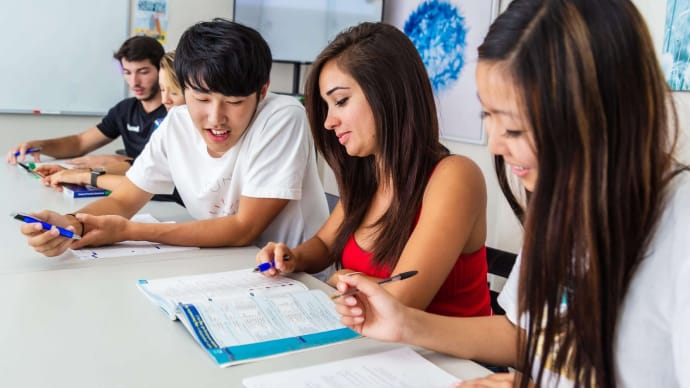







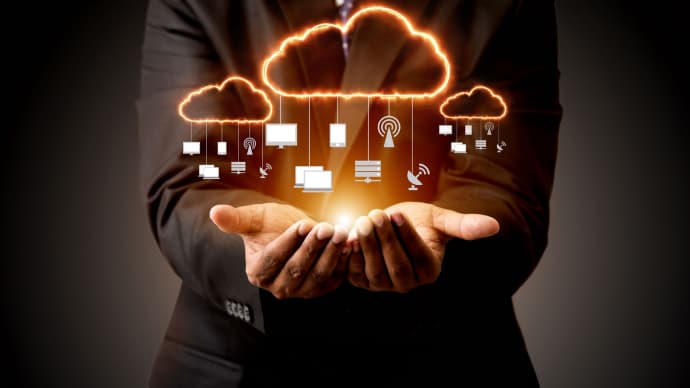












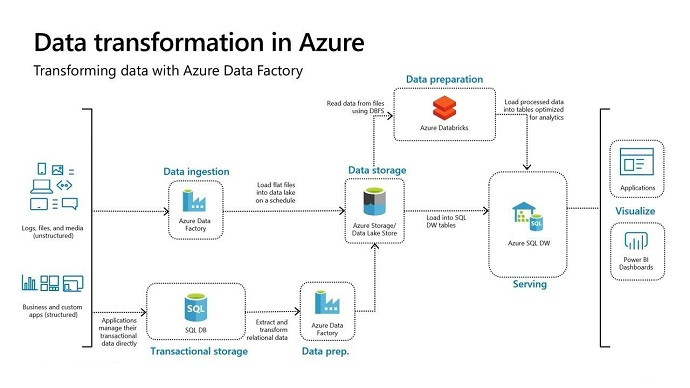









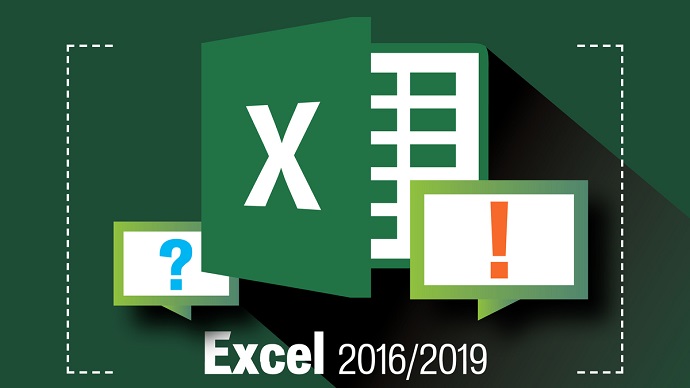





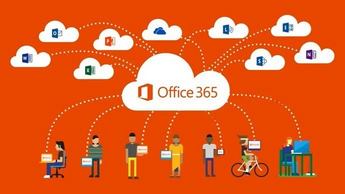
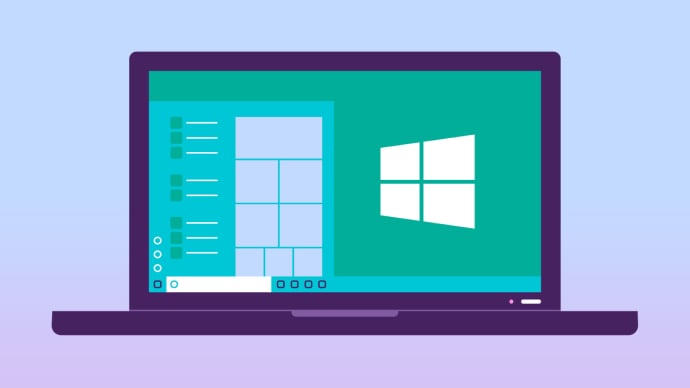








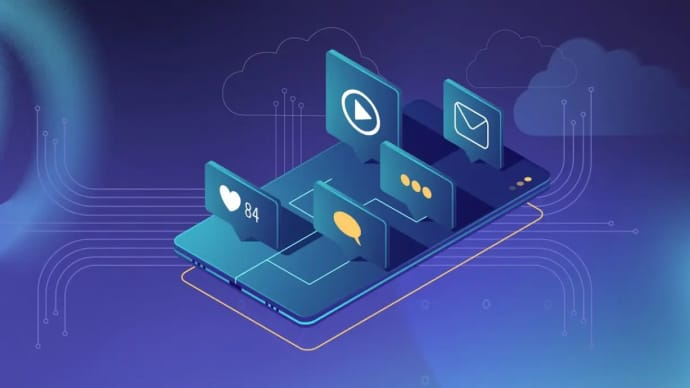
Only Registered Members can View Training Courses
Please fill out your email address below in order to view Training Courses. Registration is Free and Easy, You Simply need to provide an email address.
- Trusted by 1.2M IT Certification Candidates Every Month
- Hundreds Hours of Videos
- Instant download After Registration






